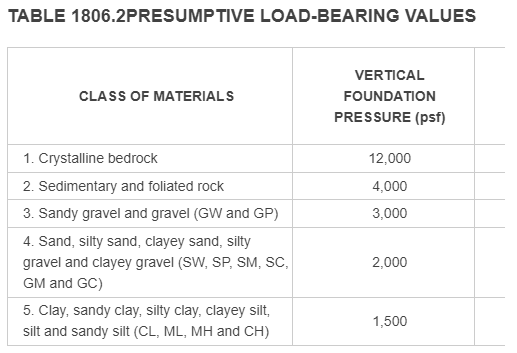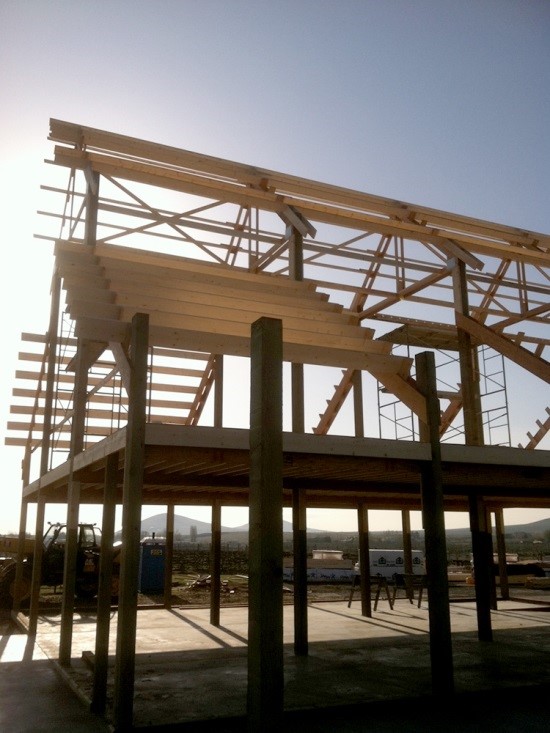Welcome to Ask the Pole Barn Guru – where you can ask questions about building topics, with answers posted on Mondays. With many questions to answer, please be patient to watch for yours to come up on a future Monday segment. If you want a quick answer, please be sure to answer with a “reply-able” email address.
Email all questions to: PoleBarnGuru@HansenPoleBuildings.com
DEAR POLE BARN GURU: Mr. Guru I was wondering if I could ask you a question about pole barns, because I have an issue with mine that is stressing me out. I live in Virginia and My pole barn/ 3 car garage was built in 2004 it is 28′ wide x 44′ long x 10′ tall, foil insulation roof and sides, 4″ concrete floor, gutters and downspouts, 3 insulated garage doors with 5 windows in each and an entry door. I have never noticed any moisture on my garage floor or anywhere inside in all these years, I have 2 classic cars and a 2005 truck that has never seen rain and only has 2,000 miles on it. When I went to change the oil I noticed pulleys under the hood are starting to rust along with bolts and suspension parts underneath. Could humidity be making it rust? I have a gauge in the garage that said 65 % humidity when the temperature was 85 inside. What would be my best bet to reduce the humidity?. Parking on plastic sheeting and a dehumidifier?. I also saw online where ridge vents and vented soffits help circulate air. Thanks for any reply. VAPORIZED IN VIRGINIA
DEAR VAPORIZED: While humidity does not cause rust directly, it does promote it. Rust formation will depend upon the carbon content of the steel, as well as the amount of oxygen in contact with the steel.
From my research, it appears 40% or lower humidity is optimal. In order to reduce humidity, the building needs to be sealed up fairly tight. If there is not a vapor barrier under the concrete floor, a high quality sealant should be put on it. A Tyvek or similar building wrap should be installed between the wall girts and siding. On the inside of wall insulation, a vapor barrier should be installed, taking care to highly seal all joints and corners.
Do not place a vapor barrier at ceiling level, as warm moist air will naturally rise through the ceiling drywall and into the attic space, which must be adequately ventilated (best method is enclosed vented soffits and a ridge vent).
Once these things are done, you may have to use a dehumidifier, but at least you have a space created which can be dehumidified.
A couple of products you may want to investigate to help remove or inhibit rust are Break Free CLP and Eezox.
Mike the Pole Barn Guru
DEAR POLE BARN GURU: Sort of a pole barn question, but actually a metal roof slope design question. I think your pole barn experience is more than enough to help me with this one.
I want to add a simple metal roof over my back deck.
The deck is 40′ long and projects 10′ out from the house.
Unfortunately, the slope has to be 1.5/12 for me to have 72″ height (bottom of joists) over the deck at the lowest end of the roof.
Can I meet adequate design using 2X6x10′ joists on 4′ centers with 2X4 purlins 24” OC using 28 gauge corrugated metal?
If not, should I use 3′ centers for joists or would you recommend 2′ centers?
Or is a 1.5/12 pitch not feasible in this application? I could go 2/12 pitch but the height at the lowest end of the roof trusses would only be 68″ above the deck level (a little too low for my taste).
Thanks Pole Barn Guru for any help you can give me. KAN I IN KENTUCKY
DEAR KAN I: Lots of issues going on here.
While light gauge steel roofing is a great product, it does have some limitations. If you are considering pre-painted (colored) steel, you should be aware of the warranty being void on slopes of less than 3/12.
You also should have a height of no less than 6’8” from top of decking to bottom of any framing which people could walk under (and 7’ would be better yet).
As to sizing of rafters (joists as you have called them), you can use Table R-13 at: https://www.awc.org/pdf/STJR_2012.pdf to determine adequate size and spacing based upon the live (snow) load at your particular site. You will need to know the Fb value of the material you propose to use for rafters. With Southern Yellow Pine (most common in your area) 2×6 #2 has a value of 1000 psi, 2×8 is 925 psi.
In either case, the 2×4 purlins at 24 inches on center will prove to be adequate.
You can read more about the Code requirements for patio covers here: https://publicecodes.cyberregs.com/icod/irc/2012/icod_irc_2012_apph_sec001.htm
Mike the Pole Barn Guru
DEAR POLE BARN GURU: I noticed that my light colored pole barn siding was getting a black coating (kind of looks like coal dust but it isn’t). I figured just some scrubbing with household detergent would remove it but I was wrong. It appears to have stained the paint.
Worried now that the staining is permanent. Barn is only about 10 years old. Any suggestions would be appreciated.
Thanks. STRAINING WITH STAINS
DEAR STRAINING: It really should not be stained. The following is our typical instruction, as recommended by the steel roll forming companies:
For homeowners accustomed to sanding and painting exterior walls (or paying to have done), the easy-care pre-painted steel roofing and siding convenience can lull one into complacency. But, like any outdoor material, steel siding and roofing does get dirty – dirty enough, in fact, to be cleaned at least once a year.
Dirt pickup may cause apparent paint discoloration when exposed, in some dirt-laden atmospheres, for long time periods. Slight chalking may cause some change in appearance in strong sunlight areas. A good cleaning will generally restore the building appearance and render repainting unnecessary. An occasional light cleaning will help maintain good appearance.
To maintain original building panel finish, the only regular maintenance necessary is an annual washing. Remove airborne dirt and weather-related streaks with a garden hose or pressure washer and a bucket of sudsy water. If rinsed frequently, a garden hose may be all which will be needed to use.
Light panels may be washed with either mild detergent-type cleaners or by steam and high pressure spray systems. Apply cleaners with sponge or soft brush and rinse thoroughly in cold water to eliminate cleaning agent film build-up. Follow cleaning agent manufacturer’s instructions. Test small area before applying over entire surface. Hard water deposits may be removed with a 10% acetic acid solution in cold water. Rinse thoroughly.
Mike the Pole Barn Guru









